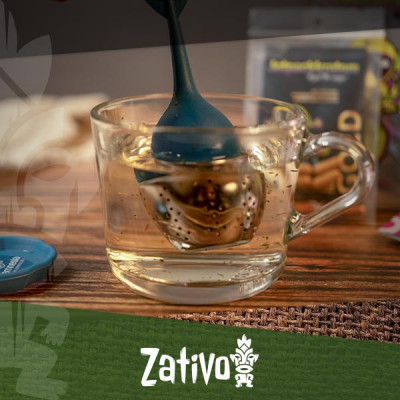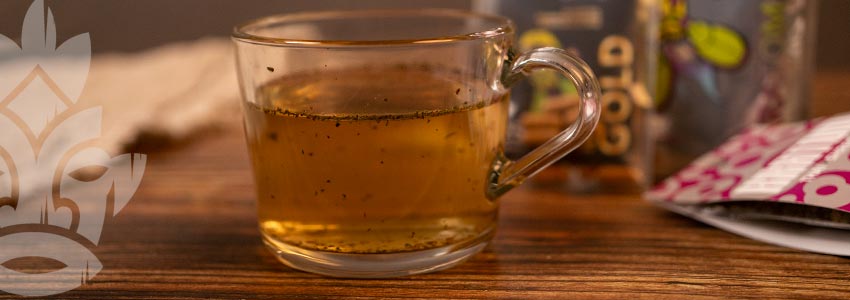Don't have an account?
Register NowYou have to add to cart at least 5 bottles or any program to make checkout.
- BlogHow To Make Kratom Tea
How To Make Kratom Tea
Published: October 20th, 2023
Categories:
Plants and Seeds
Kratom is becoming more popular in the US and Europe, but it has long been used in Southeast Asia. This interesting plant can cause stimulating effects at low doses, and sedating, opiate-like ones at higher doses.
In this article, we explore how to brew kratom leaves into a tea, which is considered by many to be the best way to take them.
What Is Kratom Tea?
Kratom tea is, as the name suggests, tea made from kratom. It is one of the most popular and effective ways to ingest this psychotropic leaf. Traditionally, many choose to chew the bitter leaves and wait for the effects to take hold, but it is often agreed that brewing up a tea is a more palatable method of ingestion.
Kratom tea can be made using either leaves or powder, and it can be accurately dosed for desired effects. Plus, you can even use lemon to enhance the speed of onset and strength of the effects. And unlike with chewed leaves, the unpleasant taste can be somewhat masked by adding different flavourings, such as regular tea or honey.
What Are the Effects of Kratom Tea?
The effects of kratom tea are the same as with any other form of kratom. At lower doses, kratom can cause stimulating, caffeine-like effects that help users to focus and maintain high energy levels. In Southeast Asia, some people use kratom regularly to gain these energising effects.
At higher doses, the effects of kratom flip entirely, and it becomes a sedative that can cause feelings of euphoria. Though all kratom follows this pattern, certain strains lean more in one direction or another.
• Green vein kratom: Kratom leaves with green veins tend to be the most balanced, with the most equal ratios of the four main alkaloids. For this reason, green vein kratom is great for beginners.
• Red vein kratom: These types of kratom lead more towards sedative, opiate like effects. As such, people who prefer red vein strains tend to use the plant for sedation or to address pain and discomfort.
• White vein kratom: These types of kratom are the most stimulating and have the fewest narcotic qualities. If you want something akin to coffee, then white vein kratom is a good choice.
How to Make Kratom Tea: 3 Methods
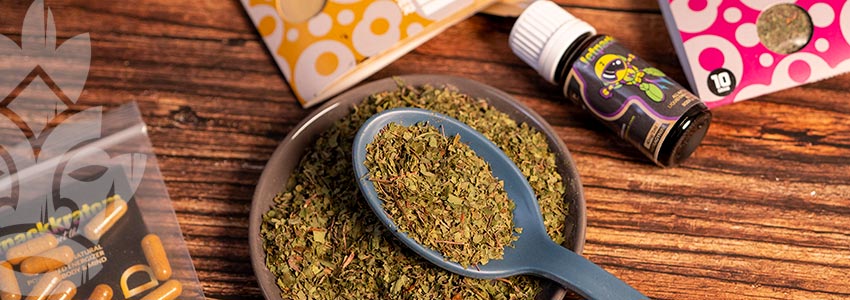
Below you will find three different methods for making kratom tea. The first uses dried leaves, the second powder, and the third adds lemon into the mix to increase the strength of the effects.
How Hot Should the Water Be?
It isn’t entirely clear what the optimal temperature for making kratom tea is. However, the general consensus is that water just below boiling is hot enough to efficiently extract the alkaloids, but cool enough not to destroy them.
Method 1: Kratom Tea With Dried Leaves
Making kratom tea with dried leaves is very easy. You should chop the leaves up into small pieces, rather than grinding them into powder. Then, you just need to add hot water to the leaves.
How you do this is up to you. You can brew it in a teapot, a French press, with a loose leaf strainer, or simply in the cup you intend to drink from. With this latter method, you can consume it similarly to yerba mate. To do this, add hot water to a cup full of leaves, then use a small straw to consume the liquid.
Tea made with dried leaves can be consumed immediately, but the longer you leave it to steep, the stronger the concoction will be. Five minutes will be enough for ample effects, but you can also leave it for much longer.
Most people agree that kratom tea made with dried leaves is the most pleasant way to consume kratom, and produces the smoothest, most enjoyable effects.
Method 2: Kratom Tea With Powder
If you have kratom powder, you can add this to simmering water. Leave it to simmer for five to thirty minutes. Even five minutes is enough to make a potent brew, but if you leave it longer, then more of the alkaloids will be extracted and you’ll have a more potent tea.
Experiment with timing to find out what works best for you.
You can drink this liquid as is, or strain it to remove the powder. The powder will collect at the bottom and form a layer of sludge, much like Turkish/Arabic coffee. Though it can affect the texture, it poses no issues to you beyond this.
Method 3: Lemon Tek Kratom Tea
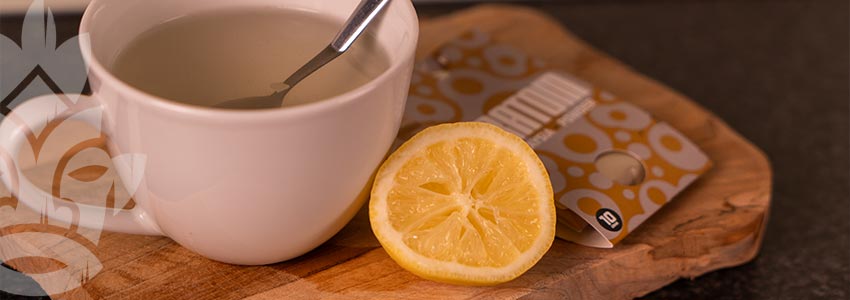
If you want to improve the rate of extraction, you can even squeeze lemon juice into the tea.
To make kratom tea this way, simply squeeze a lemon into the simmering water just before or after you add the powder or leaves, then stir it a little.
The citric acid helps to pull the alkaloids out of the plant matter and into the water, meaning that the effects come on faster and harder than they otherwise would. If you want to get the most from your kratom, this method works a treat.
How to Improve the Flavour of Kratom Tea
Kratom tea doesn't taste good—there isn't really any way around this. However, it is possible to add other ingredients to improve and mask the flavour of this bitter leaf.
To improve the flavour of kratom tea, consider adding:
• Sugar or honey: These, among other sweeteners, can really help to take the edge off of a kratom brew and make it easier to stomach. It’s too much to say that it will taste good, but it will certainly be easier to consume.
• Liquorice: The potent flavour of liquorice can go some way to override the flavour of kratom, and can make the tea much easier to drink.
• Tea: You can also add other types of tea to balance out the flavour. These can even go hand in hand with a sweetener or liquorice. If you use tea, you should avoid ones that contain caffeine, as this might interact with the effects of kratom in unpredictable and unenjoyable ways.
What Are the Side Effects of Kratom?
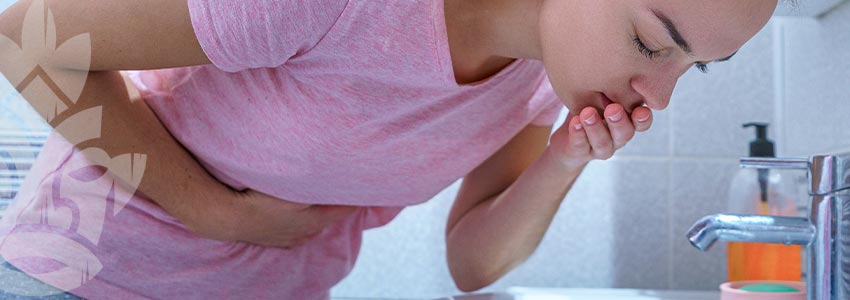
Kratom can exhibit many different side effects, especially if taken at high doses or over long periods. These include:
• Nausea and vomiting
• Dizziness
• Constipation
• Brain fog
• Memory problems
• Fatigue
• Anxiety
Is Kratom Safe?
Kratom appears to be fairly safe if used irregularly.
It’s important to note, however, that kratom interacts with opioid receptors and affects dopamine levels. As such, it is addictive. How addictive it is remains unclear, but that it is addictive and comes with associated consequences is known. Therefore, persistent use of kratom can be potentially very dangerous.
As such, you should be very careful about how you use kratom, if you choose to use it at all. If you know you struggle with addiction and substance abuse, then perhaps it is not the best substance for you.
Kratom Tea: Perhaps the Best Way to Take It
If you do choose to take kratom, then many agree that brewing it into a tea is the best way to do so. It still doesn't taste great, and so many also choose to add other ingredients to try to improve or mask the flavour—at least to some degree.
Regardless of how you choose to take kratom, research it thoroughly first to understand the risks of this interesting and addictive substance.

